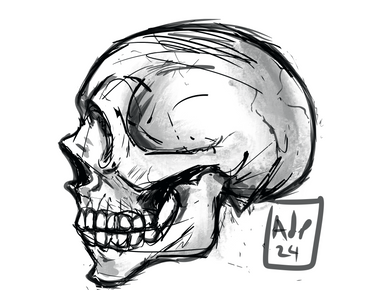Unleashing Your Creativity: Exploring the Power of Minus 8
- Aaron Perry
- Dec 29, 2024
- 3 min read
In art direction and creating in general, inspiration often comes from the most unexpected
places. Rather than waiting and staring at your screen, paper or canvas for that perfect
moment, sometimes the best approach is to generate a wide array of ideas from most common to the most “unorthodox”, narrow them down, and then focus deeply on the most promising concepts. This method often helps break my creative blocks and ensures a variety of directions can be explored before I commit to any design. Here’s a process you can follow:
1. Start with 10 Random Ideas
The first step is brainstorming 10 completely random ideas. These can come from
personal experiences, your surroundings, historical influences, pop culture, or even
absurdity. The point is to open your mind to various possibilities, even if they seem
disconnected from your project at first. Starting with 10 can help limit the anxiety of
being overwhelmed by too many ideas at once. You are going to be using your brain in
the next 2 steps.
For example:
Neon-lit city streets with graffiti
Mechanical insects
That one awkward date
Skateboard culture
Skull
Tropical flora
Retro sci-fi aesthetics but badly made
Rap Battle from Outer Space
Tribal masks made of apples
Surreal dreamscapes of Puppy
2. Remove 8 of those Ideas
Next, look and evaluate each idea. Start eliminating the ones that feel least connected to
your artistic goal (if you have one) or seem less compelling. This step isn’t about saying
When you're sizing up an idea, remember that calling it “bad” or “awful” is about as subjective as arguing over pineapple on pizza. Instead of tossing ideas out like last week's leftovers, try to give them a fair shake by seeing which ones really jive with your grand master plan. This means putting on your detective hat and figuring out how each idea fits with your values, goals, and whatever magical outcomes you're hoping for. Oh, and let's not kid ourselves—the first idea that pops into your head is about as unique as a cat meme. Seriously, folks all over the globe have probably had the same brainwave while brushing their teeth. So, resist the urge to cling to that first idea like it's the last cookie in the jar. Instead, take a joyride through the land of possibilities and polish up those thoughts. This rinse-and-repeat process can lead you to those golden nuggets of innovation that make your project shine like a disco ball and connect with your audience like a viral dance craze. By nurturing a culture of creativity and open-mindedness, you can wade through a sea of ideas and fish out the ones that truly capture your vision and dreams. So, let’s say you decide to remove everything but 2.
Now you’re left with:
Skull
Graffiti
3. Flesh Out the Final Two Ideas
Now that you have your final two, you’ll explore how to flesh out their elements and
merge them into your project’s vision. By focusing on just two, you’ll have the space to
dig deeper into the visual language, mood, and thematic connections of each. DO THE
RESERACH because one thing can mean different things to different people and the
“devil is in the details”. Less awkward conversations avoided by just going to the library and reading a book or two. It won’t hurt I promise. Remember to dive deep into that sketchbook.
4. Fuse and Expand
Get pumped about what happens when you bring these two ideas together! Picture how their strengths can work together and boost each other, creating an awesome synergy that takes everything to the next level. Dive into finding common themes or goals that connect both ideas, making it easy to blend them smoothly. Be ready for any challenges that might come up during this exciting process and tackle them with smart solutions. Try out different strategies like brainstorming, team discussions, or even prototyping to make your vision a reality (This is where your sketchbook comes in). This way, you'll make sure the final direction is not just well put together, but also strong, innovative, and ready to make a bigger impact than either idea could alone. The aim is to create a perfect mix that uses the best of both ideas, opening up new and exciting possibilities!
For instance, you might create a visual style that mixes the ancient and the natural: This the part that you should be having fun with. Above I added more elements as I flesh my ideas out to create a fresh bold design.
Bam!!!! that a good running start to getting your idea off the ground.
By starting with 10 random ideas and focusing on just two, you’ve created a framework
for refining inspiration into something unique and cohesive. This process ensures that
you’re not limiting yourself too early in your creative journey, while also allowing
enough depth to fully explore your final choices.
Remember “art is fun y’all”.



















Comments